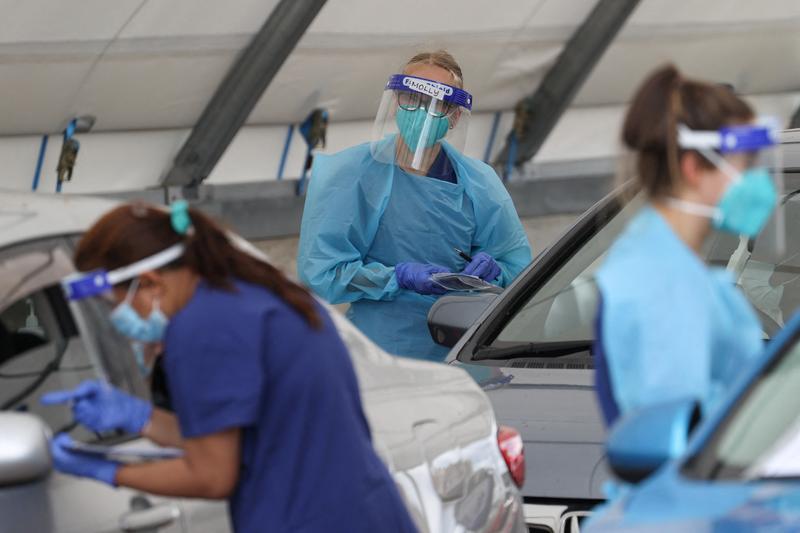SYDNEY (Reuters) – Australia on Thursday reported its biggest pandemic caseload with a runaway Omicron outbreak driving up hospitalisation rates as the surge put severe strain on supply chains forcing authorities to ease quarantine rules for more workers.
After successfully containing the virus earlier in the pandemic, Australia has reported nearly a million cases over the last two weeks as people slowly get adjusted to living with the coronavirus amid fewer restrictions. Total infections detected since the pandemic began neared 1.4 million.
More than 147,000 new cases have been recorded so far on Thursday in Australia, with about 92,000 in the most populous state of New South Wales (NSW), although that includes a backlog of positive at-home results dating back to the beginning of January.
Net new hospital admissions and people admitted to intensive care are at their highest in the pandemic but authorities have said the health systems can cope with the rising cases.
A total of 53 new deaths have been reported so far, with NSW suffering its deadliest day of the pandemic with 22 deaths. But the death rate during the Omicron wave is lower than prior outbreaks in Australia, where more than 92% of people above 16 are double-dosed and a booster drive is ramping up.
Amid pressure on supply chains, Victorian state authorities on Thursday exempted more workers from quarantine requirements for being close contacts. Staff in emergency services, education and transport can go back to work if they are symptom-free.
“There is no quick fix to this,” Victoria Premier Daniel Andrews said during a media conference on Thursday. “These are commonsense changes, they will help but they are not everything, there is no simple solution.”
Victoria’s move comes ahead of a meeting of the national cabinet – the group of federal and state leaders – later on Thursday, where Prime Minister Scott Morrison will propose steps to relieve the pressure on business supply chains.
Queensland state on Thursday decided to fully open its domestic borders for the first time in nearly two years with travellers not required to carry border passes and negative COVID-19 results.
Source: Read Full Article
